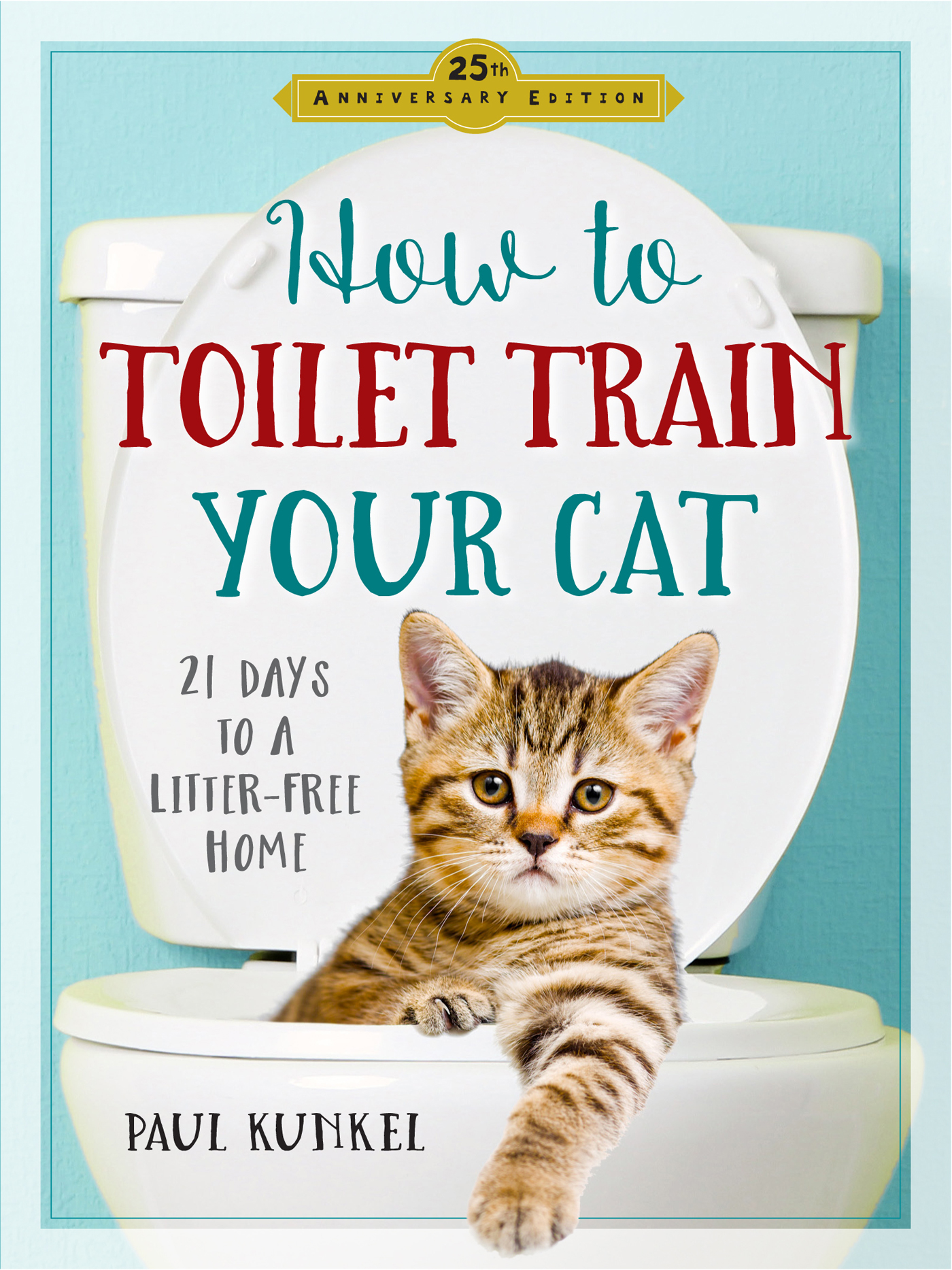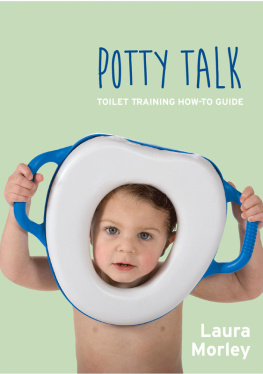

How to
ToileT Train
Your Cat
21 days to a Litter-Free Home

by Paul Kunkel
Illustrations by Kimble Pendleton Mead
Workman Publishing New York
Copyright 1991 and 2016 Paul Kunkel
All rights reserved. No portion of this book may be reproducedmechanically, electronically, or by any other means, including photocopyingwithout written permission of the publisher. Published simultaneously in Canada by Thomas Allen & Son Limited.
Library of Congress Cataloging-in-Publication Data is available.
ISBN 9780761189787
Cover design by Lisa Hollander
Cover photo by Andrey Kuzmin/Fotolia (cat); Africa Studio/Fotolia (toilet).
Illustrations by Kimble Pendleton Mead
Workman Publishing Co., Inc. 225 Varick Street New York, NY 10014 workman.com
WORKMAN is a registered trademark of Workman Publishing Co., Inc.

Contents

: What is a Cat?
From Ancient Egypt to the present day: mans best friend.
: The Art of the Box
Before you can toilet train, you must litter train. Heres how to do it quickly and easily.
: The Mystery of the Box
Whats really in cat litter? Is it healthy for your cat?
: 21 Days to a Litter-Free Cat
You can toilet train your cat. The simple steps start .
: Maintaining a Litter-Free Cat
From coping with the occasional slipup to keeping your older cat happy and healthy.
: Frequently Asked Questions
Introduction

A s any cat owner will tell you, the bond between cats and humans is as strong as it is enduring. Both affectionate and independent, a cat can be dignified and inscrutable one moment, playful and loving the next. Pressing against your leg, looking up with a fiery gleam in his eye, his intoxicating purr and soft furry warmth working their eternal magicthese are pleasures only a cat lover can know.
* For ease of language, Ive decided to refer to cats as him in this text. You can, of course, toilet train female cats with equal success.
Mans Best Friend?
What began as a quiet love affair in Egypt more than six thousand years ago has blossomed into something of a mass movement. In 1980 a national cat census found that thirty-five million cats were living in American households, as compared to fifty-two million dogs. Today, however, the cat outnumbers mans best friend by a considerable marginan estimated eighty-six million, compared to only seventy-eight million dogswith popularity showing no signs of slowing. This means that about forty-three million American households own, or are owned by, one or more cats.
What explains this change? An increase in one- and two-person households; the growing number of two-paycheck families; the increasing number of apartment dwellers; and a desire among young couples and older people to take on low-maintenance pets.
Phyllis Wright, who was the vice president of the Humane Society of the United States in the 1980s and 90s, even claimed that cats are the genetically engineered pet.... They are much less demanding than dogs and much more conducive to a busy lifestyle than any other pet.

Problems, Problems
Yet this very popularity has fostered the myth that cats, unlike dogs with their many obedience and behavior problems, can essentially do no wrong. With this misconception in mind, the uninitiated will bring home their first kitten in total ignorance, only to grow disenchanted as the adorable kitten matures into a somewhat less cute adult. Slotted into the daily household routine, the cats day rapidly shrinks into a dull round of trips to the kitchen for food and water and then to the litter boxover and over, day after day, week after week. Eventually, as the owners interest wanes, the daily ritual of cleaning the litter box becomes an every-other-day chore, then every third day, until the box becomes such a headache for cat and owner that the cat begins to just miss the litter box, or dig so vigorously that he leaves litter scattered everywhere. In both cases, the cat is trying to say something in the only way he knows how. Yet no one listens until the cat avoids the litter box altogether in favor of a more absorbent material: your grandmothers Persian rug, the back of your closet, or that quiet spot behind the couch that only a cat can reach.
According to Dr. Dale Olm, formerly chief animal behavior specialist at the New York office of the American Society for the Prevention of Cruelty to Animals, soiling problems cause more cats to be abandoned or put to sleep than any other single issue. The problem is huge, says Dr. Olm. Slowly the smell becomes so bad that no one wants to visit you anymore. Finally it becomes so bad that even the cat revolts and owners get rid of the cat because of its abnormal behavior. Yet the truth of the matter, says Dr. Olm, is that there is no such thing as abnormal behavior in cats, only normal behavior in an abnormal situation.
Kittens Must Be Trained
As faithful pets, cats not only rely on us for their food, water, health, and well-being, but they depend on us to provide the conditions they need to become good companions in our homes. Like young children, kittens and cats must be trained to prevent their natural predilectionsdeveloped over millions of years of evolutionfrom developing into unacceptable (by human standards) behavior. Yet they cant train themselves, so they need our help. A misbehaving cat is nearly always the fault of the owner, says Dr. Olm, not the cat. But before we can help them, we must first understand them.
Even though mother cats teach their kittens to bury their wastes as soon as they are able to dig loose dirt, it is both unnatural and unhealthy for an adult cat to bury his wastes in the same spot every day. Why? According to Dr. Olm, Cats are both attracted to and repelled by the smell of their own wastes. On the one hand, pet cats habitually go to the litter box, because its where theyve always gone. Yet one of the cats most basic instincts is to equate the smell of its own waste products with danger. This is because cats in the wild use their highly fragrant urine and feces to ward off potential predators and rivals, as well as to mark the boundaries of their territory. Therefore a wild cat will rarely do his business in the same spot twice, preferring instead to spread his droppings in a large ring that encircles his nest. Near the nest, where the smell of this scent barrier is nonexistent, the cat feels perfectly safe. Yet toward the edge of his territory, where the smell of accumulated droppings becomes quite noticeable, the cat must be on his guard at all times.
Not surprisingly, cats using a single litter box often develop a form of territorial-anxiety behavior that results from enormous stress. Initially, the cat will pace as though he were a caged animal, meowing loudly and clawing everything in sight. As the stress builds, reactions can take many forms, until finally the cat begins to leave his droppings everyplace
Next page















